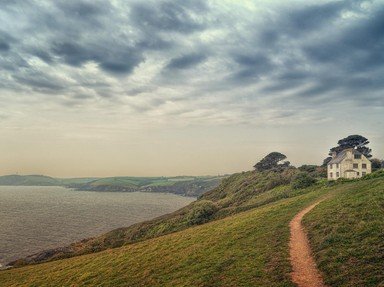Quiz Answer Key and Fun Facts
1. Traditionally, the tour starts in Ross-on-Wye, seen here from the by-pass looking across the river. The white building is the hotel where the very first visitors stayed. What is its regal name?
2. The Market Hall is located in the centre of Ross-on-Wye and is built from which material?
3. Leaving Ross-on-Wye and travelling for about four miles, so still in Herefordshire, will bring us to this castle, overlooking the River Wye. What is its name?
4. Another few miles, and a climb, will bring us to a well known vantage point from which this photo has been taken. Where are we now?
5. The path of the Wye takes us past which area of natural beauty, one visited by Harry Potter during his adventures?
6. Still following the Wye, we cross into Wales and reach a town where the River Monnow merges into the River Wye. Which town, also the birthplace of Henry V, are we in now?
7. One of the highlights of the tour, this ruined abbey has inspired artists, such as Gainsborough and Turner, and poets, including Wordsworth. Which of these is it?
8. Just before reaching Chepstow, the Wye passes through Sedbury, which is the southern end of Offa's Dyke. If we follow the Offa's Dyke Path north, we will arrive at which Welsh coastal town?
9. We've arrived at Chepstow, the final destination of the tour, and another castle. The castle here was originally built on the orders of which of these?
10. Right at the end of the Wye is a bridge which was definitely not on the itinerary of the first tourists. It links Wales and England by crossing which river?
Source: Author
rossian
This quiz was reviewed by FunTrivia editor
agony before going online.
Any errors found in FunTrivia content are routinely corrected through our feedback system.
